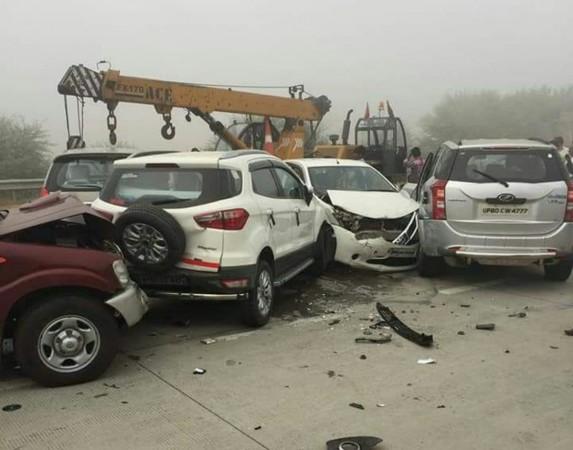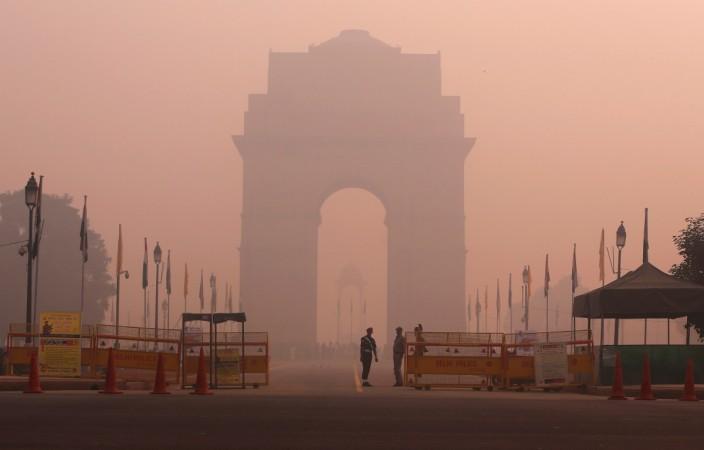The Delhi smog has been the flavour of the nation for a week. Where international safe levels of the polluting particulate matter is around 25, the scale at Delhi has crossed 500 and even 900 levels in some places.
Dramatically put, and quoted repeatedly, this is equivalent to smoking 40 cigarettes a day. The pile-up on the freeways in the region due to poor visibility made for some "OMG" WhatsApp forwards.
And yet, the average resident went about their daily routne unperturbed despite teary eyes; some masks, some indoor purifiers and a shrug saying "this is nothing new." Nothing had changed except the quality of air inhaled. Thick with particulate matter, so tiny to be visible, but with tremendous potential for damage on health.
Long-term exposure to the tiny particulates (PM 2.5 , measuring at most 2.5 micrometres in diameter — 30 times smaller than the woidth of a human hair) increase mortality risk, particularly from cardiovascular causes.
Exposure to high concentrations — as happens during some seasonal pollution episodes like in Delhi — can worsen existing lung and heart conditions, with children, the elderly and those with predisposed respiratory and cardiovascular diseases being most susceptible.

And yet, most of us tend to brush it aside subconsciously as the dots just don't connect. We do not see the particles lodged in our lungs, and hence do not heed the facts.
It was during a recent visit to Varanasi that we had indirect, yet direct, experience of this. The respiratory system took a solid knock and recovered only after getting back home. Not that Bengaluru is pollution-free, but simply that when in Varanasi, we were moving around a lot, generously inhaling the more polluted air.
The same cocktail of dust from traffic and construction sites, industrial emissions, diesel generators and burning of firewood (at homes and also the ghats here) as in Delhi leads to pollution in Varansi. A report last year noted that levels of PM2.5 were routinely double the safe limit during winter, being the main cause of an eight-fold rise in respiratory illnesses recorded in Varanasi.
Many Indian cities share this plight. Around 2.5 million Indians die annually from pollution-related diseases. And still, we brush it off as inevitable and minor. Simply because we cannot see beyond the poor road visibility!
Much like how exhaust pipes of vehicles get coated on the inside with thick black muck, so also continuous air pollution leads to coating of the lungs. Some particles eventually pierce the lining and cause further damage. As mentioned before, it is the elderly and children who suffer most.
Looking at the source of all this pollution, it is clear that crop burning cannot be dismissed as a cause, however age-old a tradition it is. But the problem is compounded by industrial use of dirty fuels like pet coke (banned in the West and exported to India, where cheap is the byword), road and construction dust, vehicular exhaust and biomass burning by the poor.
People are the same, whether they live in cities or villages. All seek easy and cheap solutions. Burning the over 20 million tonnes of paddy straw is easier than taking some effort for the sake of the health of those in distant cities. Industries prefer burning dirty yet cheap fuel to thinking of good health. Comfort of private cars is preferred to public transport, which anyway is not adequate.

Chulhas running on firewood and dung are still used by many of the poor. Vehicular emissions from two wheelers are big contributors to particulate matter and other pollutants. The sulphur dioxide and nitrogen dioxide in the air come mostly from industrial effluents mostly, while municipal waste burning contributes almost 10 percent to the poor air quality. Dried leaves shed by trees in the winter being burnt as an easy way of disposal continues despite being banned in some states. This too adds to the particulate matter.
As for crop burning between the paddy and wheat crops cultivated in the Punjab-Haryana belt, the farmer has a very short window to operate and prefers the quick and cheap option of burning paddy stubbles left after machine harvesting.
Even if there was more time available by producing a short duration paddy crop, experts doubt that farmers would consider tilling and converting the residue to mulch, a time and money-consuming effort. Innovations like a machine that removes the stubble and sows the wheat, and then adds back the stubble as mulch, are just making an entry.
The combination of the post-harvest time and east blowing winds from the middle-east see the dust-laden winds collect water particles from cooler Pakistan and then the smoke over Punjab's burning fields! These winds now laden with weight settle over cold Delhi with its own home-made pollutants joining the fray.
Due to temperature inversion in winter where the surface being cold does not heat the air and let it rise, most of the polluted air remains at near ground level and becomes a deadly cocktail of poisonous gases inhaled. Among these is deadly ozone, formed at ground level when pollutants emitted by cars, power plants, and industries react chemically in the presence of sunlight.
While the high court suggested cloud seeding, the Delhi government was seriously considering spraying water over the 1,500 sq km of the city using helicopters! A costly solution, considering the amount of water required. Luckily, in the end it settled for spraying water from tankers in a few posh localities! This, when the poor and migrant workers living on pavements suffer the most from pollution.
![[Representational image] Several youngsters participated in the marathon as blanket of smog covered Delhi on Sunday delhi pollution](https://data1.ibtimes.co.in/en/full/625655/delhi-pollution.jpg?h=450&l=50&t=40)
Among other solutions mooted was wall-to-wall paving to contain road dust. Cities are already witnessing floods during rains due to exactly this maximum concretising. We, the public, refuse to believe what we cannot see. The government refuses to act on what it knows, for obvious reasons.
If vehicles are the biggest culprits, what disincentive is there for private vehicles? If Singapore can stop all new registrations of vehicles, what prevents Indian governments from stepping in and saving their heaving and choking cities from more traffic?
Delhi has over 90 lakh vehicles while a city like Bengaluru has around 70 lakh, contributing heavily to the PM2.5. As road dust contributes most to PM10, the importance of trees becomes clear.
Trees act as dust filters. But we would rather hack them all and concrete our surfaces. Instead of the ideal 32-55 trees for each person, in Bengaluru we have hardly one for each. Common citizens are as responsible as any mafia in this crime. A tree shedding leaves or cutting off the light is enough for one to cut it down.
Besides a few activists and thinkers crying hoarse, no one seems concerned. The biggest contributor to this laissez-faire is the total lack of public awareness and participation in civic issues that envelop collective well-being. In times that focus more on quantity than quality, this is inevitable. We must clear our own smog first.








